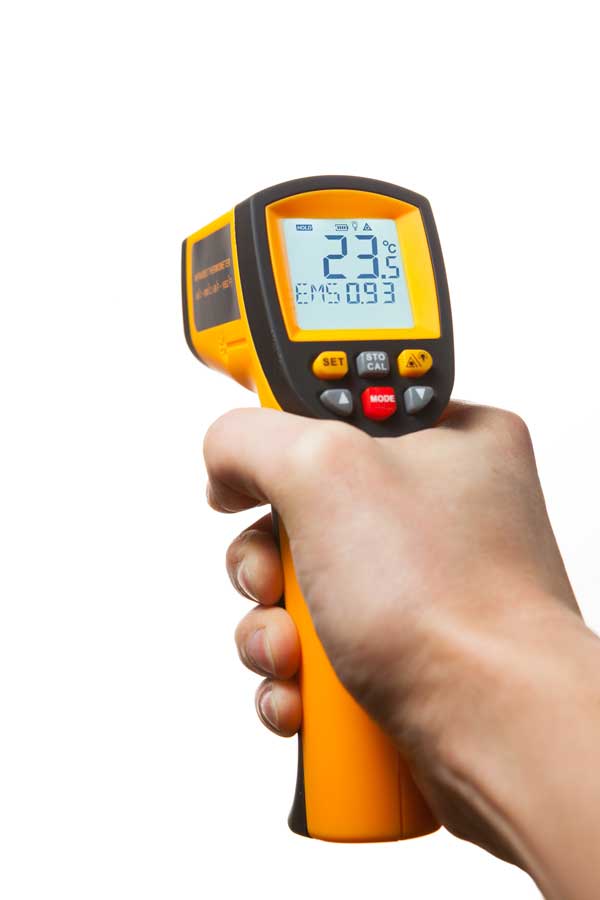Temperature measurement is a fundamental aspect of countless scientific and industrial processes. The various devices designed for this purpose range from simple household thermometers to sophisticated infrared sensors used in laboratories and industrial environments. Understanding the myriad of available instruments not only highlights the versatility of temperature measurement but also unveils the intricacies involved in different methodologies. As we explore the fascinating world of temperature measurement instruments, we will unravel both their functionalities and the underlying principles that govern their operation.
One may begin by considering the most recognizable device in temperature measurement: the mercury thermometer. Used for well over a century, this instrument operates on the principle of thermal expansion. As the temperature rises, the mercury expands and rises within a calibrated glass tube, indicating the temperature on a marked scale. While remarkably effective, mercury thermometers have fallen out of favor due to safety concerns regarding mercury exposure and environmental hazards. Nonetheless, their historical significance in developing temperature measurement techniques cannot be understated.
In response to the limitations posed by mercury-based devices, alcohol thermometers emerged. Utilizing colored ethanol, these thermometers also exploit thermal expansion but offer a safe alternative without the toxic risks associated with mercury. The vibrant hue of the alcohol provides enhanced visibility, enabling intuitive readings. This simplicity, however, masks a wealth of underlying complexity: factors like ambient pressure and the specific heat capacities of materials influence the accuracy of these devices, bringing the subtleties of thermal dynamics to the forefront.
As technology evolved, so too did the instruments available for measuring temperature. Digital thermometers have revolutionized the field by incorporating electronic sensors. These devices typically utilize thermocouples or resistance temperature detectors (RTDs). Thermocouples consist of two different metals joined at one end, producing a voltage that correlates with temperature difference. This principle of thermoelectricity is pivotal in numerous applications, especially in industrial settings where precision is paramount.
On the other hand, RTDs operate on the principle that electrical resistance changes with temperature. Often crafted from pure platinum, RTDs offer exceptional accuracy and stability over a wide range of temperatures. Their ability to provide precise readings makes them indispensable in research laboratories and industrial processes where exact thermal control is necessary. However, their complexity and cost can present challenges, particularly in resource-limited settings.
Another intriguing instrument is the infrared thermometer, which allows for non-contact temperature measurement. These devices operate based on the principle of radiant energy emission: all objects emit infrared radiation proportional to their temperature. By detecting this radiation, infrared thermometers can ascertain the temperature without direct contact, facilitating temperature assessments in hazardous or hard-to-reach environments. This non-invasive approach has opened new frontiers, particularly in medical applications where rapid fever detection can be crucial.
Beyond these conventional measurement techniques lies the realm of thermography, where sophisticated infrared cameras render thermal images of environments. Used extensively in building diagnostics, equipment monitoring, and even wildlife research, thermography provides a visual representation of heat distribution. This application is particularly significant in identifying thermal anomalies, thereby enabling more profound analyses of systems ranging from electrical circuits to biological entities.
Nonetheless, while the aforementioned instruments are prevalent, it is essential to acknowledge their limitations. Factors such as calibration, environmental conditions, and the emissivity of the measured surface can significantly affect accuracy. For instance, emissivity—the ability of a surface to emit thermal radiation—varies among materials and necessitates compensatory adjustments during measurement. Thus, an understanding of material properties becomes as paramount as the device itself in achieving reliable measurements.
Moreover, environmental influences such as ambient temperature, humidity, and air pressure can distort readings. Instruments must, therefore, be carefully selected and calibrated according to specific measurement requirements. The interplay between temperature measurement and environmental conditions illustrates the complexity of seemingly straightforward observations, showcasing a rich tapestry of physical science underlying everyday phenomena.
The pursuit of accurate temperature measurement has led to innovations like thermistors—temperature-sensitive resistors that exhibit large changes in resistance with small temperature variations. They serve in applications ranging from consumer electronics to climate monitoring systems. Despite their non-linearity, their rapid response times and high sensitivity make them valuable tools in the ongoing quest for precision.
Furthermore, the advent of smart technologies has introduced a new paradigm in temperature measurement. Integration with IoT (Internet of Things) enables real-time data logging and monitoring, paving the way for enhanced automation in various industries. Such technologies allow for remotely monitoring temperatures in conditions ranging from food safety to aerospace applications, demonstrating that the fascination with temperature measurement is not merely about the numbers; it’s about the profound impacts these readings have on safety, efficiency, and even health.
In summary, the inquiry into temperature measurement instruments reveals a complex interplay of physics, engineering, and innovation. From simple alcohol thermometers to advanced infrared cameras, each device encapsulates both a methodology and a historical narrative of human ingenuity. As we continue to embrace technological advancements, our understanding of temperature measurement will undoubtedly evolve, continuously captivating our collective imaginations and deepening our comprehension of the world around us.










